Artists and filmmakers depict pre-history: the art of imagining the unimaginably real
part of the series ‘A History of the World in 16 paintings, and the films they inspired’ Here I feature Thomas Cole’s The Savage State
Gillian McIver
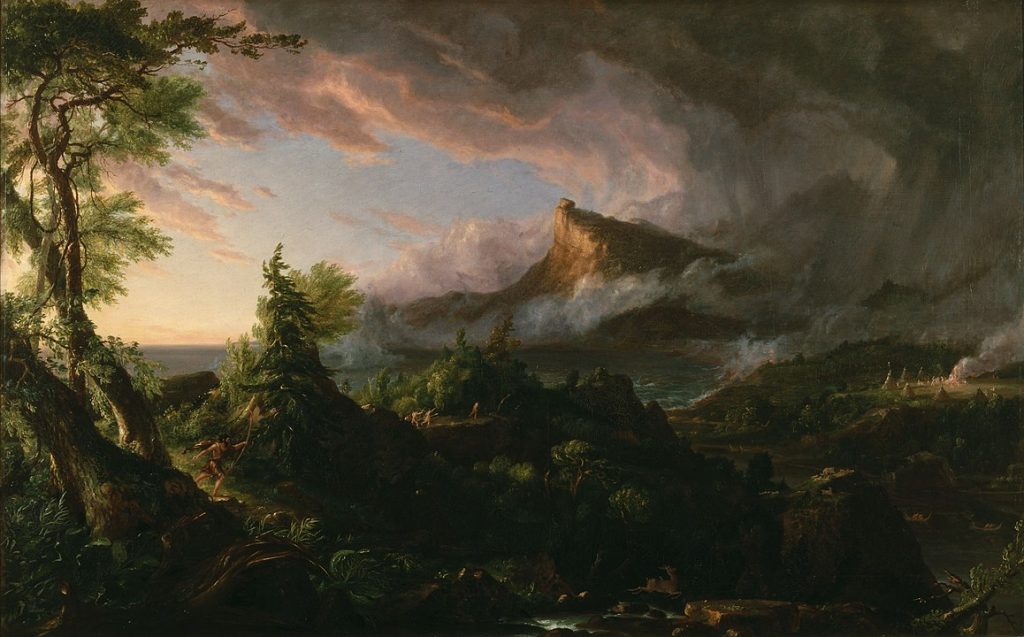
Thomas Cole’s The Savage State, The Clan of the Cave Bear and Quest for Fire
How to artists and filmmakers depict pre-history? You might be surprised to find that it is actually very uncommon for them to try to do so. Jurassic Park is not pre-history, it just has dinosaurs. Pre-history is different: the term means history before recorded information. It is the long period between the use of the first stone tools (3.3 million years ago) and the invention of writing (9000 – 3400 BCE).
This is a long time! But be careful not to imagine that prehistoric humans lived like animals. We made a lot of visual art, architecture and jewellery, for a long time before writing appeared. Most of it is fabulous. In fact, even the idea that writing is the mark of civilization ignores the sophisticated oral and visual cultures which never developed writing because they really didn’t need it.
Anyway, for the purposes of this article, the term pre-history really is about history; it’s about what popular culture has long referred to as the ‘caveman (and cavewoman)’ era. As you’ll see, it takes a lot of imagination to conjure up what ‘caveman world’ might have been like. Fortunately, a handful of artists have actually tried to do this.
First, painting. Given that pre-history predates most of what we might consider urban society, it stands to reason that depicting pre-historical scenes would be about landscape and nature, and humans within that. Of course, there are plenty of paintings which are pure landscape, but it is rare for an artist to depict an explicitly prehistoric scene.
Even the spectacular painter of light, Claude Lorraine, felt obliged to add human narratives to the landscape. See, for example, Landscape with Narcissus and Echo; it’s clearly about the trees and the clear golden light, not about the mythical figures. (Actually, Claude got other painters to paint the people). I digress.
Closer to our topic, British-American Thomas Cole painted The Savage State in 1833. It is a remarkable painting that seeks to depict a primeval scene. In The Savage State, Cole imagines a world before human civilization.
Cole is best known as America’s first great landscape painter, founder of the Hudson River School. The Savage State is part of Cole’s series The Course of Empire, five paintings depicting the rise and fall of an imaginary city.
In it, he protests the ruin of the landscape by ‘civilisation’ (a theme he returns to in other paintings). Cole’s series follows a coherent narrative, tracing the story as a primeval community develops into a vast empire, then falls into decadence. It is almost a film storyboard,
I will return to The Course Of Empire in another article. Here I want to isolate The Savage State as a distinctive and possibly unique painting of pre-history. We will use this as a starting point to consider how artists and filmmakers depict pre-history.

In The Savage State, primeval humans live in a sublime landscape of swirling sky and rough terrain. Landscape dominates the image. There are indications of human ‘savages’ in the picture. You can see them off to the right in a small encampment. They do not represent any specific ethnicity. Nor do they represent conquered people. Instead, Cole meant to show ‘the origins of modern society’.
The figures in the picture are tiny, and we can barely see them, never mind understand any details. It does look like Cole’s ‘savages’ reference aboriginal North American life. You should know that Cole also painted scenes from his friend James Fennimore Cooper’s novel The Last of the Mohicans. It’s unlikely that Cole had any experience of actual native communities. These had been largely eradicated from the Hudson River region, where Cole worked.
In his writings, Cole made it clear that he intended the human settlement to be European. However, in the 19th century, before archaeology of pre-historical sites, there was little knowledge or understanding of what pre-historical communities in Europe might have been like.
Unfortunately, the political conditions on America at the time meant that European settlers, of which Cole was one, believed that the Native Americans were less ‘civilised’ than Europeans. Therefore, they might serve as models for pre-historical imagery.
So, while aspects of the ‘generic savages’ in The Savage State are probably appropriated from Native American cultural imagery, Cole did not consciously intend to depict Native Americans as prehistoric. Nevertheless, the prevailing colonial mindset he inhabited led him there.
In the 1980s, two films came out, both of which went to great lengths to try and imaginatively and credibly depict prehistoric human life. The first was 1982’s Quest For Fire, directed by Jean-Jacques Annaud. The second was directed by Michael Chapman, in his film version of the novel Clan of the Cave Bear (1986, from the novel by Jean Auel). Both of those films are almost entirely forgotten today, and I was not expecting much, but I was both surprised and fascinated by them.
Quest for Fire
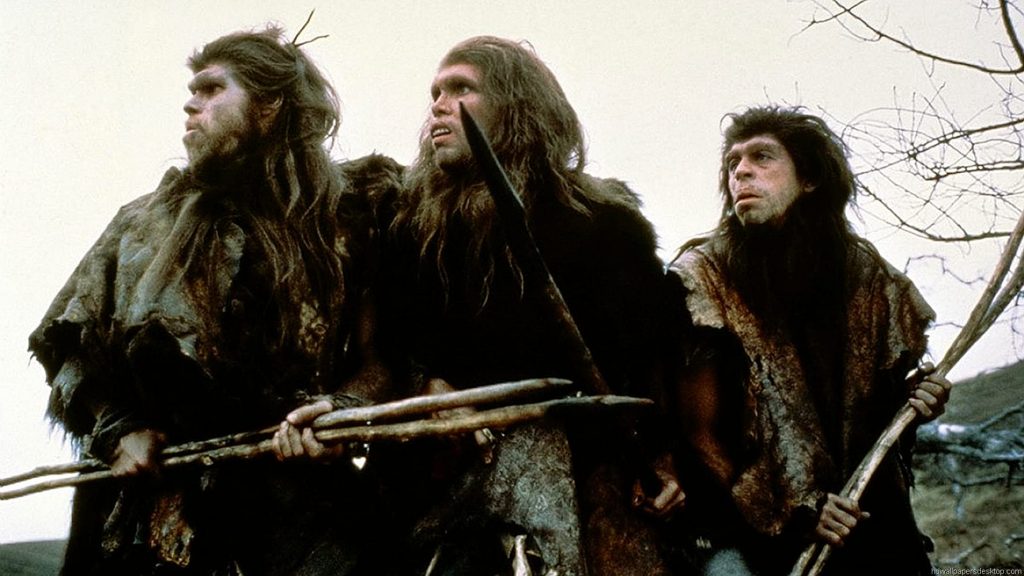
Quest for Fire originated as a fantasy novel written in 1911 (by two Belgian brothers under the pseudonym J.-H. Rosny). This was long before today’s carefully-excavated knowledge about pre-history. But it indeed reveals the author’s fascination with both evolution and human behaviour. I’m not particularly concerned about whether the book or the film is accurate; first of all, I would have no idea because it’s not my area of specialism.
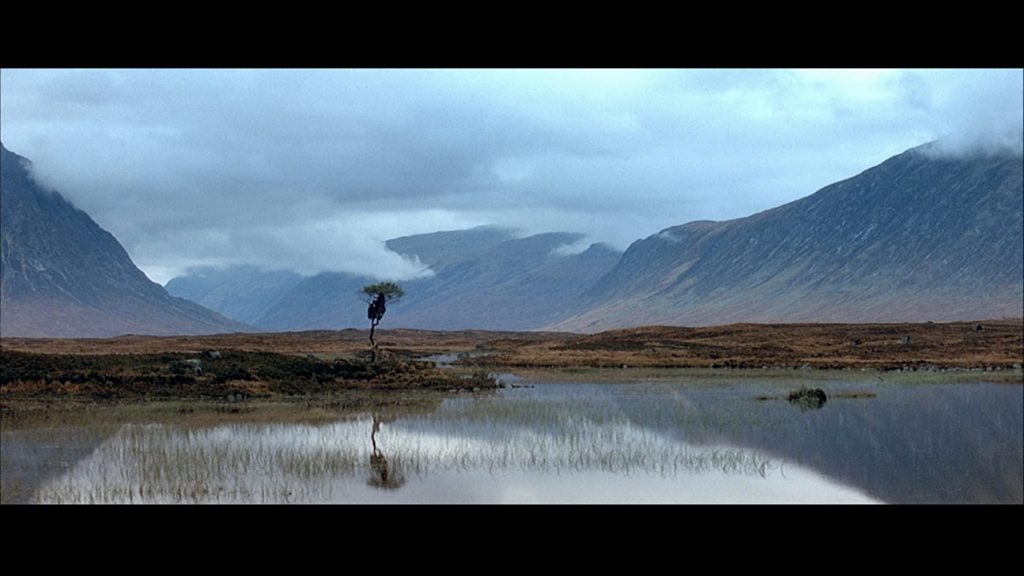

However, one can ask the critical question: is the film at least credible? It deals with human emotions and behaviours, which we would recognize today: group solidarity, domination and submission, conflict, love and loyalty, and pride in overcoming adversity. The Quest For Fire story begins with a small nomadic group carefully protecting its precious fire. But they don’t have the Promethean ability to make fire from scratch. When the fire goes out, three young males from the group go off in search of fire.
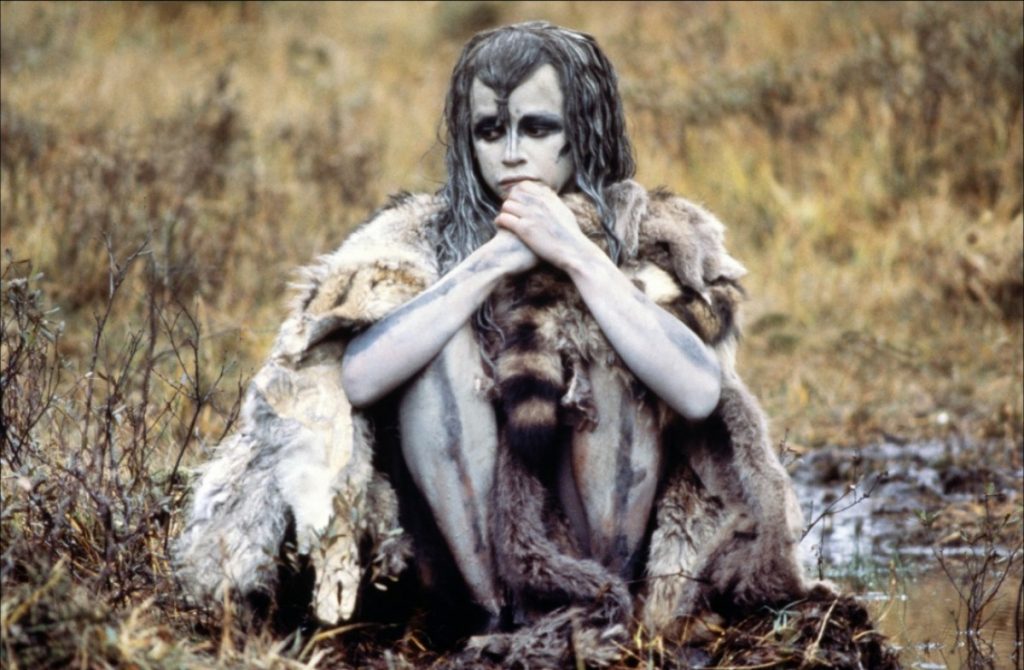
Along the way, these vaguely apelike humanoids make contact with a seemingly more ‘evolved’ group that lives in villages, has much more language and uses tools. The coming-together of a woman (Rae-Dawn Chong, excellent performance) from the sophisticated group and a man from the unsophisticated group symbolizes some kind of dialectic: the last frame shows the couple in peace and harmony, the woman pregnant.
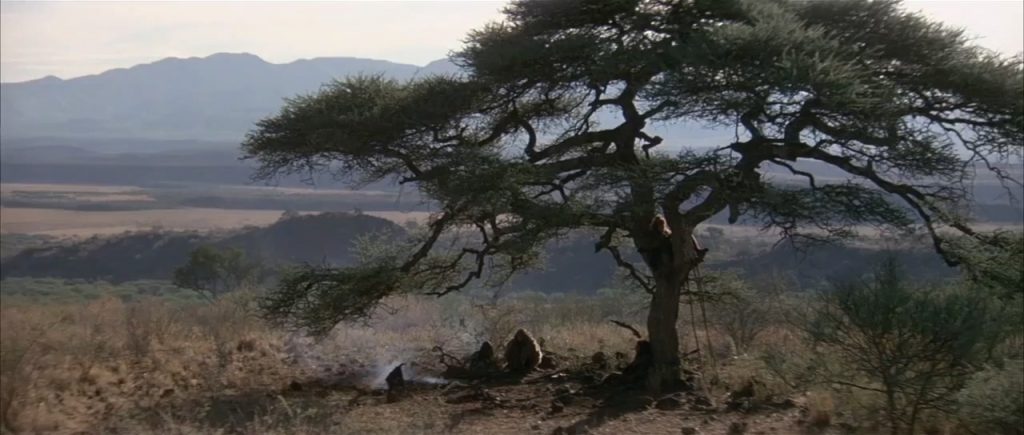
The visual depiction of the ‘caveman world’ in Quest for Fire is achieved through excellent cinematography by Claude Agostini and the work of Production Designer Brian Morris and his art department (which won Oscars and BAFTAs for makeup). Morris and his team had a very challenging job. Unlike Cole, they couldn’t merely look to (recent or historic) aboriginal communities as a shortcut to depict what prehistoric humans may have been like. So, they had to try to make it up from archaeological research while at the same time creating a richly exciting and relatable world for audiences to inhabit for the duration of the film. As a Franco-Canadian co-production, there was a substantial budget for location shooting. Jean-Jacques Annaud (who is, of course, one of the great French directors of our era) was able to film in some of the world’s most sublime unspoilt landscapes: Kenya, British Columbia, the Bruce Peninsula and the Scottish Highlands. The landscape cinematography by Agostini and his crew offers up a continent, unlike the ones we are familiar with now. And thankfully no dinosaurs.
Commenting at the time of the film’s release, the critic Gene Siskel noted that at first the film seems ludicrous and the depictions a bit forced, but then you start to think ‘I wonder if that’s the way it did happen?’ And when that happens, ‘Quest for Fire’ has you hooked.” Roger Ebert concurred, writing that “by the time the movie was over, I cared very much about how their lives would turn out.”[1]
Clan of the Cave Bear
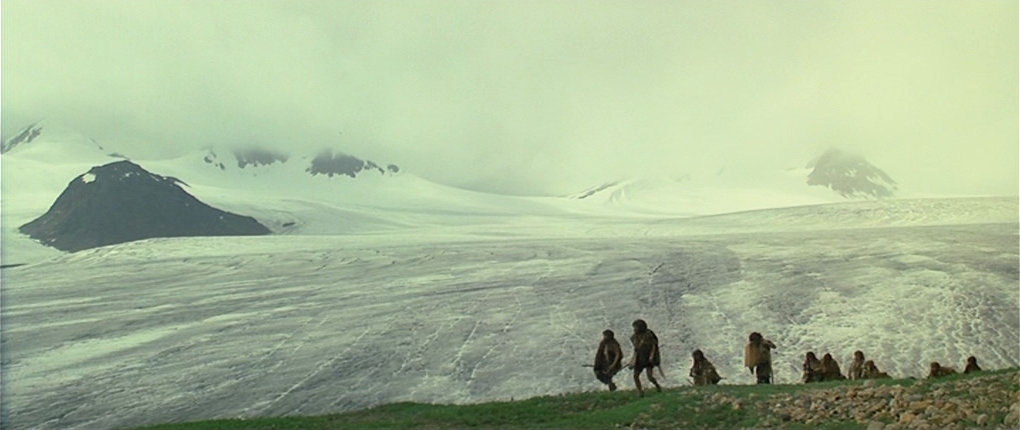
Clan of the Cave Bear also has a plot that hinges upon the interaction between a primitive tribe and a more evolved individual. It is an adaptation of a bestselling novel by Jean M. Auel, published in 1980, which spawned a series that only concluded in 2011. Auel did plenty of research for the book, but has no academic background in pre-history studies; you cannot go to either the book or the film for “facts.” Yet both books and movies offer much in the way of atmosphere and ideas.
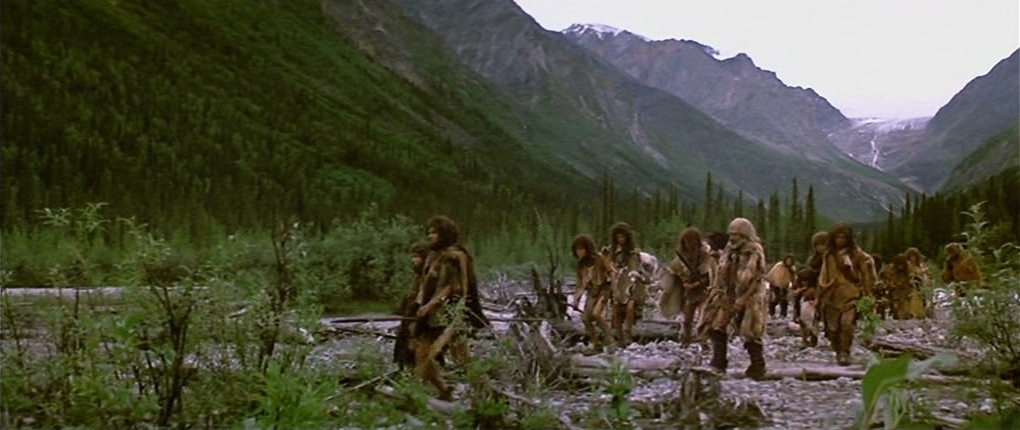
Because the film is based on Auel’s recent book (cashing in on its bestseller status), it has less scope to develop its own way – in contrast to Quest for Fire. Screenwriter John Sayles has done what he can with Auel’s story, and it is an absorbing one, though somewhat hampered in its ending by the fact that Auel clearly planned sequels.
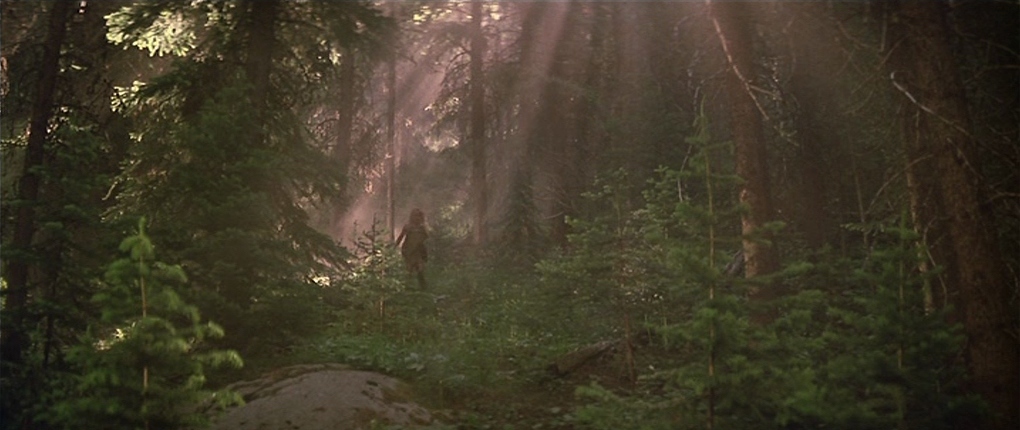
In Clan, Ayla, a young Cro-Magnon woman (Daryl Hannah), is separated from her family and orphaned during an earthquake. Found by a group of cave-dwelling Neanderthals, she is raised as one of their own. Her intelligence presents a challenge to the tribe’s young future chief Broud (who unfortunately looks and acts like a member of an 80’s metal band). But the film is less about understanding some fine points about human development than it is about championing Ayla’s female emancipation and empowerment. As Ebert put it, ‘Neanderthal man is on the way out, and Cro-magnon woman is on the way in.’ As such, it’s an uplifting film in the 80’s tradition of Flashdance, although Chapman and his team don’t soft-soap the brute details of caveman life. The British Columbia locations are again breathtaking and versatile, as is the production design by Anthony Masters (Papillon) and especially the set decoration by Kimberley Richardson.
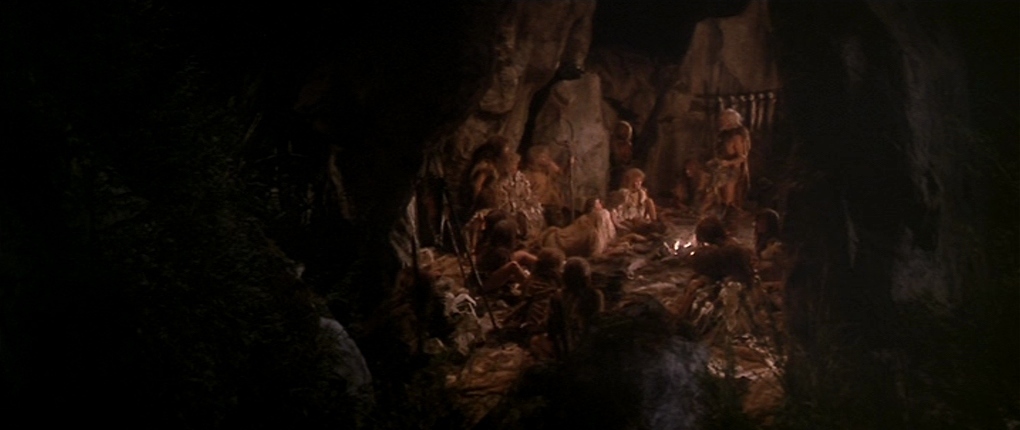
What grates in Clan is the juxtaposition of the fascinating story of Ayla’s self-discovery, her challenge to the patriarchal Clan and the finely-wrought visual storytelling, against the dated 80’s costume and makeup styling, not to mention the framing of the characters, which is pure 80’s cliché. Although Darryl Hannah’s performance is good, the studio just could not resist making the most of her blonde locks and leggy beauty. As Ebert bracingly put it, “Instead of people who are scarred, wind-burned, thin and toothless, it gives us graduates of the Los Angeles health club scene, and a heroine who looks as if she just walked over from makeup.”[2]

Nevertheless, I enjoyed Clan of the Cave Bear, and I can’t help thinking that the narrative of female self-discovery just did not sit that well with the audience of 1986; I could not find any reviews by female critics. Dated the film may be in some respects, it is definitely worth a watch.
So, what about the pre-history?
What do we learn about the depiction of pre-history shown in these films? How do artists and filmmakers depict pre-history? When he painted The Savage State Cole was already a committed conservationist preoccupied with human depredations on landscape. In both Quest for Fire and Clan of the Cave Bear we see humans dwarfed by the landscape, dominated by it, unable at the stage of human development to do anything more than simply survive in it.
I did find something particularly fascinating when I was watching Clan of The Cave Bear. At one point there is a shot of a river which seems to be a direct reference to Thomas Cole’s most famous painting, known as The Oxbow (View from Mount Holyoke, Northampton, Massachusetts, after a Thunderstorm). The picture and the film still both reveal the winding switchback of the river. Many art historians interpret The Oxbow as insinuating the confrontation between wilderness and civilization. In the left foreground the wild untamed landscape represented by a large, thunderstruck tree amid a tangle of bush. This gives way to the far view, which takes up most of the right-hand side of the painting, depicting a peaceful, populated and cultivated landscape intersected by the serpentine Connecticut River. While the wilderness is depicted as dark and the cultivated territory as light filled, Cole’s own feelings about human encroachment on the territory were decidedly ambivalent. It is not too difficult to feel the same ambivalence when we watch Quest For Fire and Clan Of The Cave Bear – how we humans came to our tendencies towards violence and acquisitiveness, and how these dark things coexist with our tendency to innovate and create, and to care for one another and cooperate.
Cole was engaged in painting ‘The Course of Empire’, the series The Savage State belongs to, and took time off from that to paint The Oxbow.
Director Michael Chapman, who is mainly known as a cinematographer (Taxi Driver, Raging Bull) is on record as having a strong sensibility for art and painting and I wonder if perhaps he was influenced by Cole’s Oxbow, which is held in New York’s Metropolitan Museum of Art.
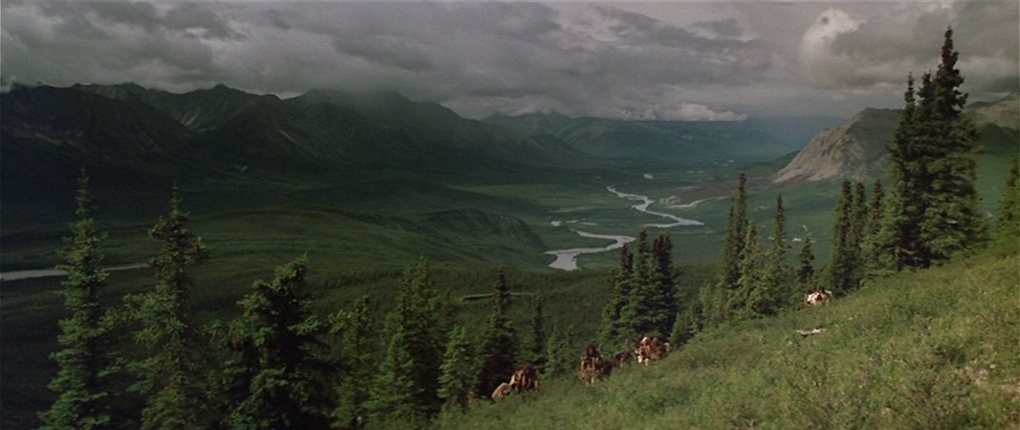

Both movies are of their time: the 1980s. However, they display that era’s willingness to embrace stories that were really different. They tried to find ways of envisioning things that demanded a lot of imagination but were still very much rooted in realism. Today so many big-budget films are about worlds of pure fantasy that we have no real connection to (e.g. superhero films). It is interesting to see these pre-history films attempting to understand something real yet almost ungraspable and try to recreate it. It hardly matters that they don’t actually succeed. Like Thomas Cole’s painting, they are trying to approach more significant themes and invite us to engage our brains in a vast imagining of the human story. In this respect, neither nor Quest for Fire nor even Clan Of The Cave Bear are escapist: they are challenging works of imagination that raised questions and in the end – through the vehicle of entertainment – they do invite us to confront ourselves.
[1] https://www.rogerebert.com/reviews/quest-for-fire-1981 | https://siskelebert.org/?p=7076
[2] https://www.rogerebert.com/reviews/the-clan-of-the-cave-bear-1986
Cole, T. (1833–1836) The Savage State from ‘The Course of Empire’ [painting series]. New York: New York Historical Society. Source: Wikimedia Commons. Fair Use applies: critical and educational use
Cole, T. (1833–1836) The Oxbow (The Connecticut River near Northampton 1836) – Metropolitan Museum of Art, Public Domain, https://commons.wikimedia.org/w/index.php?curid=182973
